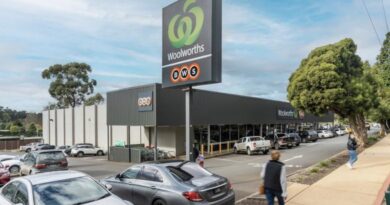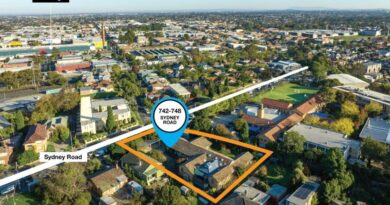Maximising Technology to Sell Your Home
A 3G- capable mobile phone allows video streaming instead of photographed images. So what can be expected from technology in years to come?
The New Oxford American Dictionary officially added “podcasting” to its word list last year, describing it as a digital recording made available for downloading to a personal audio player, such as the popular iPod.
“A podcast can be as simple as an audio file or as complex as a full-blown video production,” says Dean Harry, CEO of Melbourne-based business RealCast Networks. “There are hundreds of thousands of podcasts being produced on nearly any topic.”
Podcasts are available from many sources including Apple iTunes, PodCast Nova, Yahoo! Podcasts and feedster.com.au. They are also available from real estate websites.
Real estate agents say the most common type of podcast is an audio-visual slide show of a property, with a voiceover describing features of the home as photographs are shown on screen. It’s a virtual tour, virtually delivered to your palm.
“Podcasting in real estate is a relatively new concept,” says Mr Harry. “It was launched in the United States about 12 months ago and has grown rapidly over there. The Australian marketplace is just starting to take hold.”
The technology has created the need for professional video marketing, which can be distributed to anything with a television screen, says Brett Clements, head of production for PropVid, which is pioneering online video marketing in Australia.
Propvid produces a more sophisticated video advertisement of the home, compatible for most computer media players, mp3 players and 3G-capable mobile phones.
For about $500, online video marketing costs more than a RealCast but the property receives a photogenic makeover from professional property stylists and is filmed by trained crew and cameramen.
“We’re a TV station for the internet,” says Mr Clements. “We produce broadcast-quality TV commercials on houses that we stream over the internet and podcast. We stream the ad for three months and/or up to 1000 views.”
Shooting, cutting and streaming of a 90-second television commercial usually takes one hour to film, and 24 hours to edit, says Mr Clements. Aerial footage of the suburb is available for an extra $100.
Agents are jumping on the bandwagon. Ray White, Biggin & Scott and Bennison Mackinnon Carmichael are the latest to entertain podcast technology.
“Digital is everywhere – on TV, cable, DVD, internet, mobile phones and pods,” says Mr Clements. “We have clients replaying Propvids in car washes and cafes and on buses and train stations.”
“People are so much busier nowadays than they’ve ever been before; their audio senses are now coming into play,” says Lev Orosz, of Harvey Norman Computers.
Digital television, when married with the internet, will add to the way marketers sell all types of products including real estate, says Mr Orosz.
“Media-connected devices such as the latest XBox or PS3 mean online content can be delivered to your television in the form of, for example, a pop-up message alerting you to a new property listing,” says Mr Orosz. “It could be the case soon that by pressing a button on your television remote control, you can access a virtual tour of the house.”
However it’s far more likely, according to industry specialists, that mobile phones with 3G capabilities are the way of the future for advertising real estate.
At present, only images of a property can be delivered as a multimedia messaging service (MMS) to mobile phones. “Consumers can receive on-the-spot property photos and details about a specific property they have seen advertised, on their mobile phones,” says Brian Clark, managing director with OnRequest.
Research by the Australian Mobile Phone Lifestyle Index shows that 97 per cent of mobile phone users use SMS and over half of these use pictures, music and sounds on their mobile phones.
“The technology is there but consumer demand is not yet,” says Mr Clark. “We see MMS as a transition until 3G becomes more common.” OnRequest can also produce moving image and interactive advertisements. Mr Harry says: “Podcasting directly to a mobile phone is possible but is not currently being used. A typical podcast needs broadband speed internet access. This type of access is currently on 3G networks only.”
When broadband speed mobile networks become more commonplace, it is expected information about a property can be sent to the palm of a buyer’s hand. “As network speeds increase you will see a host of new applications being created with mobile content,” says Mr Harry.
For the real estate industry, this may spread to more sophisticated versions of Global Position System (GPS) navigation systems which can be bought as a handheld unit or fitted to a car.
More than 20 GPS satellites now broadcast precise timing signals by radio to GPS receivers, allowing them to accurately determine location. Products such as the Magellan RoadMate 300 allow drivers to choose their route by specifying such things as shortest time or quietest roads. They will recalculate the route if there is a detour and will warn if a turn has been missed. As a house-hunting planner, GPS navigation systems can be used to plan a route with multiple destinations – and are capable of storing up to 200 addresses.
“When used in conjunction with a media device unit, technology will get you to a property that’s for sale and, using an mp3 player or mobile phone, allow you to view an advertisement of the property while you’re parked outside,” says Mr Orosz.
“If you incorporate the technologies of podcasting with wireless reuters, it is possible to be talked through a property room by room via your handheld mp3 player.
“At the end of any inspection, the file can be sent to your device and saved or emailed as necessary.”
Agents agree most of this technology is limited to younger buyers who have embraced mobile technology.
“While the target for podcasts are typically those younger than 30 years old, there’s a growing number of ‘mum and dad’ buyers who have a basic understanding of how to use the products,” says Mr Orosz.
“They might not understand how it works but feel comfortable using the technology.”
What does the introduction of new technology mean for print media – once the only form of buying and selling real estate? According to Stewart Lopez of Kay & Burton Brighton – not much at all.
“Reading a newspaper on a Saturday morning is an institution across all age groups,” says Mr Lopez. “Despite the new wave of technology, there’s still a lot of people who have not and will not embrace technology such as computers and mp3 players.”
Says Mr Clark: “We see this technology as extending rather than replacing printed and internet ads.”
Movie of the week: yours
FOR little more than $100 RealCast can create a talking photo album of your house.
All costs associated with producing, editing, mixing and publishing a slide show are included, as is the cost of a voiceover that reads the script describing a property.
Your property will also be “hosted”, meaning it has a home on the internet, for as long as the property is on the market.
“As the use of technology is now more widely accepted and used as a means to access information, we are confident that our audience is no longer limited to a minority who can afford computers,” says Dean Harry, chief executive of Melbourne-based business RealCast Networks.








